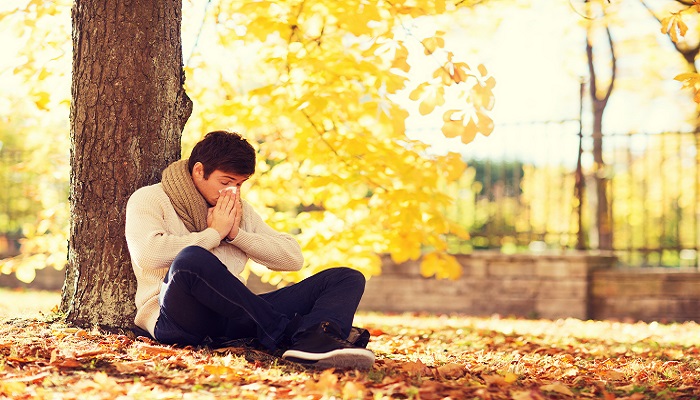Getting ahead of symptoms now means less suffering later
It’s August and you’ve settled into summer. The hammock is hung, you’ve worn a hole in the pool pass, and your barbecue technique is perfect. Cue sound of record scratching. Now you need to think about fall allergies? Yes – and although summer is the perfect time to think about fall allergies, many sufferers haven’t gotten the memo.
You hear the words, “fall allergies” and “ragweed season” and you want to run as fast as possible in the other direction. You’d rather the thoughts of itchy eyes, sneezing and sniffling didn’t intrude on summer picnics and lounging by the pool.
But, did you know, thinking ahead to when fall allergy symptoms start can save you a lot of suffering down the road? If you suffer from fall allergies, the ideal time to start taking your medication is about two weeks before symptoms normally start.
Ragweed, the biggest allergy trigger in the fall, can release one million pollen grains in one day and usually starts releasing its pollen with cooler nights and warm days in late August. It can last into September and October when the first frost hits, which is why it is a major contributor to fall allergies. If you suffer from spring allergies, there’s a good chance you also suffer from fall allergies.
But allergy symptoms don’t have to ruin your fall fun. Here are some tips from the American College of Allergy, Asthma and Immunology to keep in mind as summer winds down and fall makes its appearance:
- Take medications before symptoms start and don’t stop them immediately after ragweed is no longer in the air. Wait about two weeks after pollen counts go down to stop.
- Keep car and home windows closed so pollen doesn’t get indoors.
- Leave your shoes at the door, and take a shower, wash your hair and change your clothes after you’ve been working or playing outdoors.
- Monitor pollen and mold counts. Weather reports often include this information and can help you determine best times of day to go outside.
- Wear a NIOSH-rated 95 filter mask when mowing the lawn or doing other chores outdoors, and take appropriate medication beforehand.
- See an allergist to find relief.
Allergists are trained to identify your allergies and provide a personal treatment plan. They can also provide immunotherapy – allergy shots – which targets your exact triggers and can greatly reduce the severity of your symptoms. Allergy shots can also prevent the development of asthma in some children with seasonal allergies.
If you think you might be one of the more than 50 million Americans that suffer from allergies and asthma, we can help. Schedule an appointment today!




